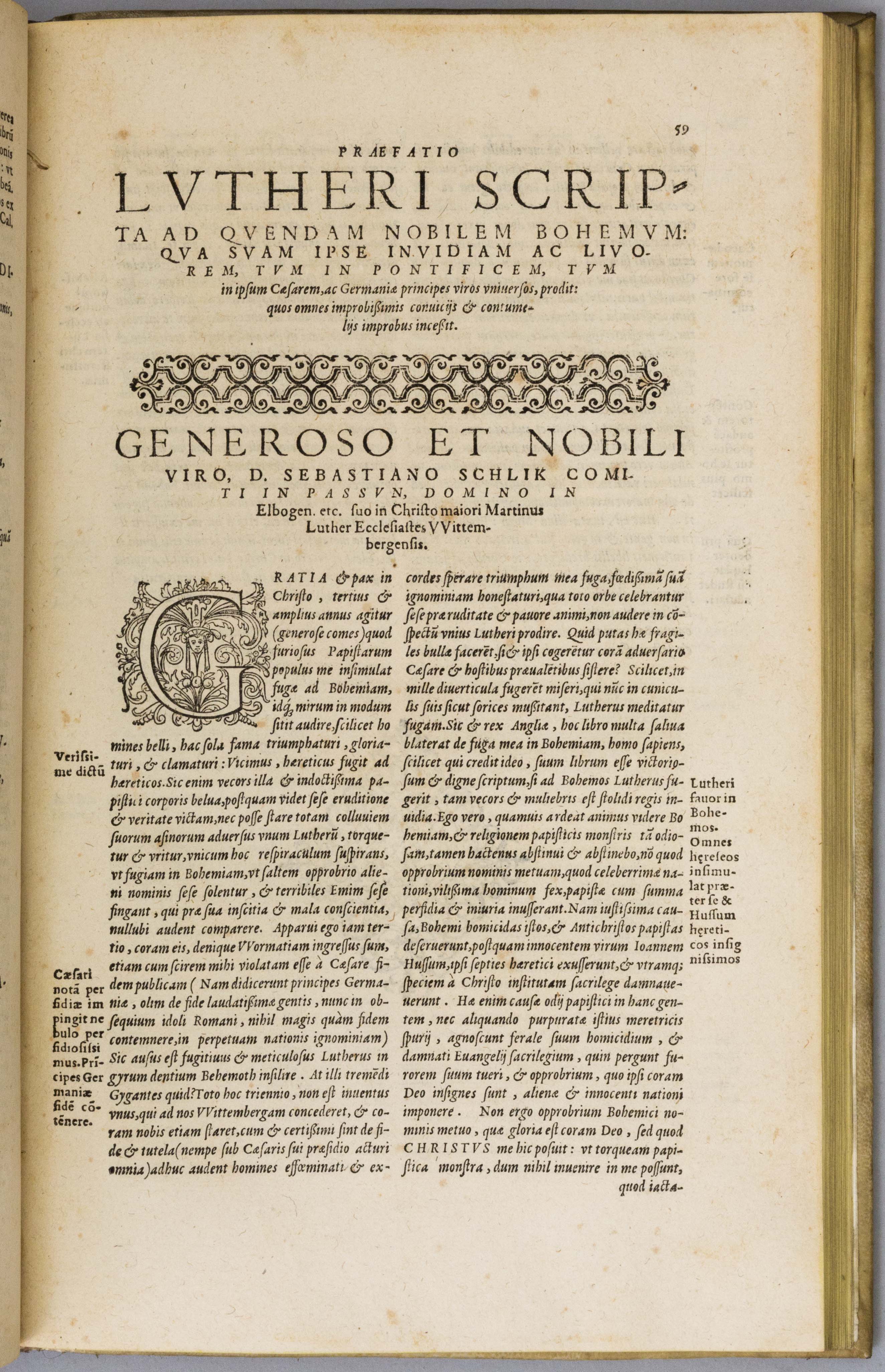
Louvain: P. Zangrius, 1566
[D.-L.L] (XVI) Bc [More] fol.
Sir Thomas More (1478-1535) was invaluable to Henry VIII in the early days of the European Reformation for refuting works seen as heretical. Over one-third of the collection of More’s Latin works shown, published in the Catholic stronghold of Louvain, is devoted to More’s Responsio ad Lutherum (‘Response to Luther’), a text originally printed in London by Richard Pynson, the King’s Printer, in 1523. Luther’s reply to Henry VIII’s Assertio septem sacramentorum (shown) was too scurrilous to enable the king to reply decorously, and therefore More, under the pseudonym ‘William Ross’, undertook the challenge. The Responsio is both a personal attack on Luther and a detailed rebuttal of his arguments. It hinges on the doctrine of ‘sola scriptura’ (‘Scripture alone’), which in its emphasis exclusively on the word of God denies the value of church tradition: More argued for the dual role of scripture and tradition. The work foreshadows More’s Dyalogue of 1529, which confronts the Lutheran teaching of WilliamTyndale and portrays Tyndale as he had portrayed Luther, as licentious, heretical, and a forerunner of the Antichrist. Later More would be beheaded for refusing to condone Henry VIII’s divorce and accept the legality of his marriage to Anne Boleyn.